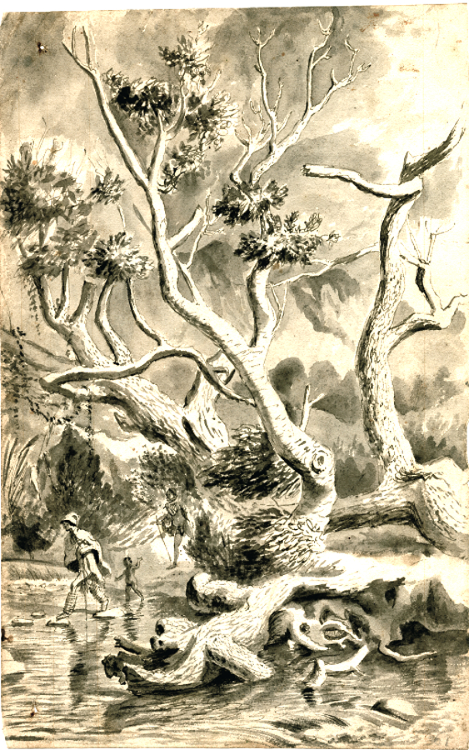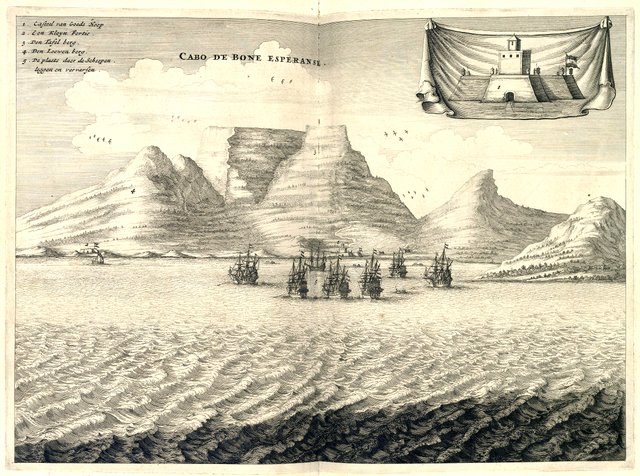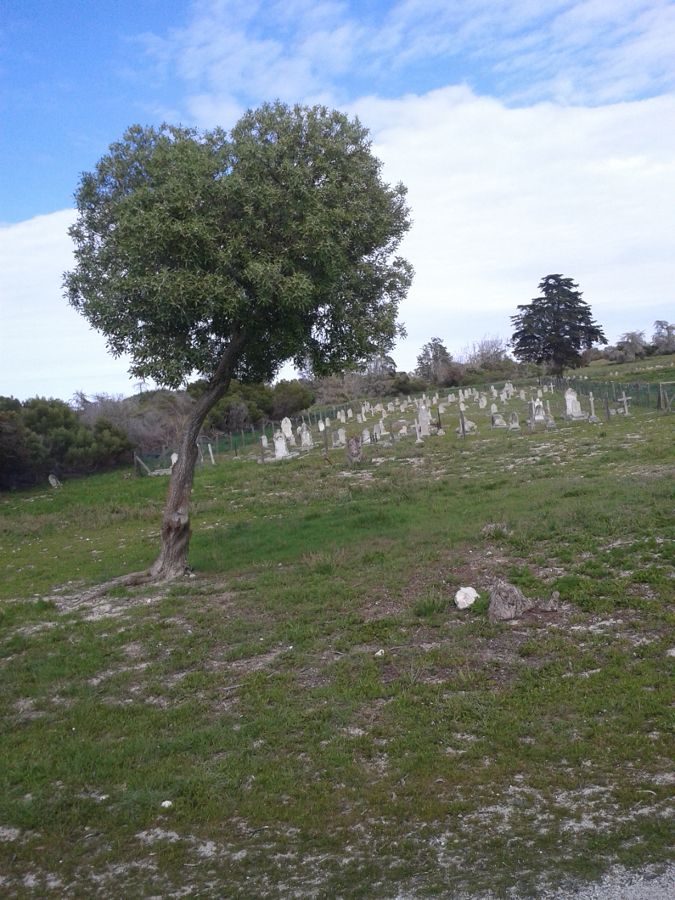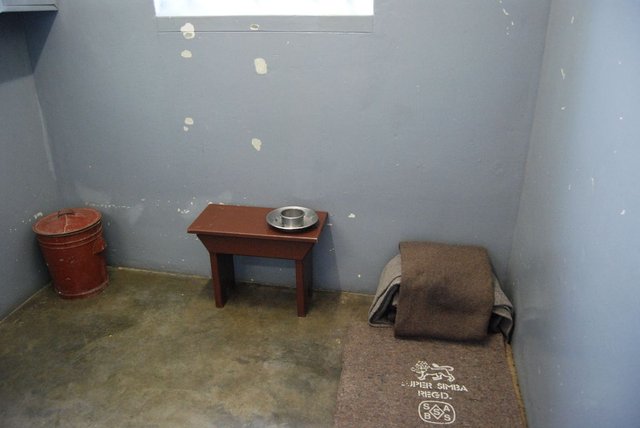
About the picture: The Khoikhoi were a pastoral people. They planted crops and herded animals. It is believed this picture was drawn before 1713, by a Dutch artist (unknown). The image is in the public domain because its copyright has expired. Uploaded from Wikimedia Commons.
Robben Island will always be associated with Freedom Fighter, South African President and Nobel-prize-winner, Nelson Mandela. Mandela was a political prisoner on the island for eighteen years. The history of Robben Island as a place of misery began long before Mandela's confinement. It was used as a penal colony, an asylum for the mentally ill, and an internment hospital for people who had leprosy.
The island is located 4.3 miles off the coast of Cape Town, South Africa. Thousands of years ago, during the Stone Age, Robben Island was connected to the mainland. As ice melted at the end of the Ice Age, sea levels rose and the area became an island. By the time the Dutch arrived, in 1488, Robben Island was inhabited by thousands of seals. Robben is the Dutch word for seal.

The picture is attributed to Jacob von Meurs, 1668. The image is in the public domain because the copyright has expired. Uploaded from Wikimedia Commons
In 1652, the Dutch settled (or tried to settle), under Jan van Riebeeck, on mainland South Africa, but the indigenous Khoikhoi resisted. The Dutch retreated to Robben Island and used it for a stopping point and a resupply depot on their voyages between Europe and the East. Fresh food--in the form of seals, penguins, and tortoises--and fresh stream water, were readily available.
Robben Island's history as a penal colony began early. First the Dutch consigned convicts there, and then, when the British took over (1806), they continued this use. Briefly, the island served as a whaling port. John Murray, a whaler, was given a concession between 1806 and 1820. Murray's Bay, which was a major port on the island, was named after him. Today Murray's Bay is preserved as part of Robben Island's unique history .
In 1845, the first people suffering from leprosy were sent to Robben Island. Their placement was voluntary--they could leave if they wanted. In 1892, this changed. A law, called the Leprosy Repression Act, provided that people suffering from leprosy be forcefully removed from the mainland and sent to Robben Island. The island was also used to confine the mentally ill. A description of the horrific conditions under which residents on the island lived may be found at the Robben Island Museum site. Here we find reports of "passengers", forcibly committed lepers, being offloaded in the surf. They are deposited in the water and left to their own devices. The document describes a lack of oversight and order on the island.
Violence was common. According to Harriet Deacon in, "The Island: A History of Robben Island, 1488-1990", a significant contingent of male guards was necessary to control "recalcitrant lepers and dangerous lunatics."

This picture of the cemetery where lepers were buried on Robben Island was taken by Art Reitveld. The image is part of the Reitveld Collection, and is used under a Creative Commons Attribution Share-Alike 4.0 International license.
In 1913, the South African government agreed to remove the mentally ill from Robben Island. By 1931, the leper hospital was also closed.
The island was used as a military base, off and on, throughout its history. In WWII defenses were fortified. However, by 1959, the South African government decided the island would be a dedicated penal institution. Both criminal and political prisoners were confined there. Prisoners were obliged to help in construction of the growing facility.
In 1964, Nelson Mandela was sent to Robben Island. He was given a life sentence, in lieu of death. In 1982, his health eroded from hard labor and isolation, Mandela was transferred to a maximum security prison, on the mainland. Finally, in 1990, he was released. He had spent twenty-seven years in prison. Instead of weakening him, politically, the long confinement strengthened his role as a symbol of the struggle against apartheid.

Nelson Mandela's prison cell on Robben Island. This picture is attributed to Paul Mannix and is used under a Creative Commons Share-Alike 2.0 Generic license. Uploaded from Wikimedia Commons
Today Robben Island is a tourist attraction. It is a UNESCO World Heritage Site and serves as a museum that memorializes the struggle to end Apartheid. Nelson Mandela's prison cell is on view for all who visit the island.
Tourists may also visit the church that lepers attended when they resided on the island. Graves of deceased lepers, some marked, may also be viewed.
Congratulations @agmoore! You have completed some achievement on Steemit and have been rewarded with new badge(s) :
Click on any badge to view your own Board of Honor on SteemitBoard.
To support your work, I also upvoted your post!
For more information about SteemitBoard, click here
If you no longer want to receive notifications, reply to this comment with the word
STOPDownvoting a post can decrease pending rewards and make it less visible. Common reasons:
Submit
Thank you!
Downvoting a post can decrease pending rewards and make it less visible. Common reasons:
Submit